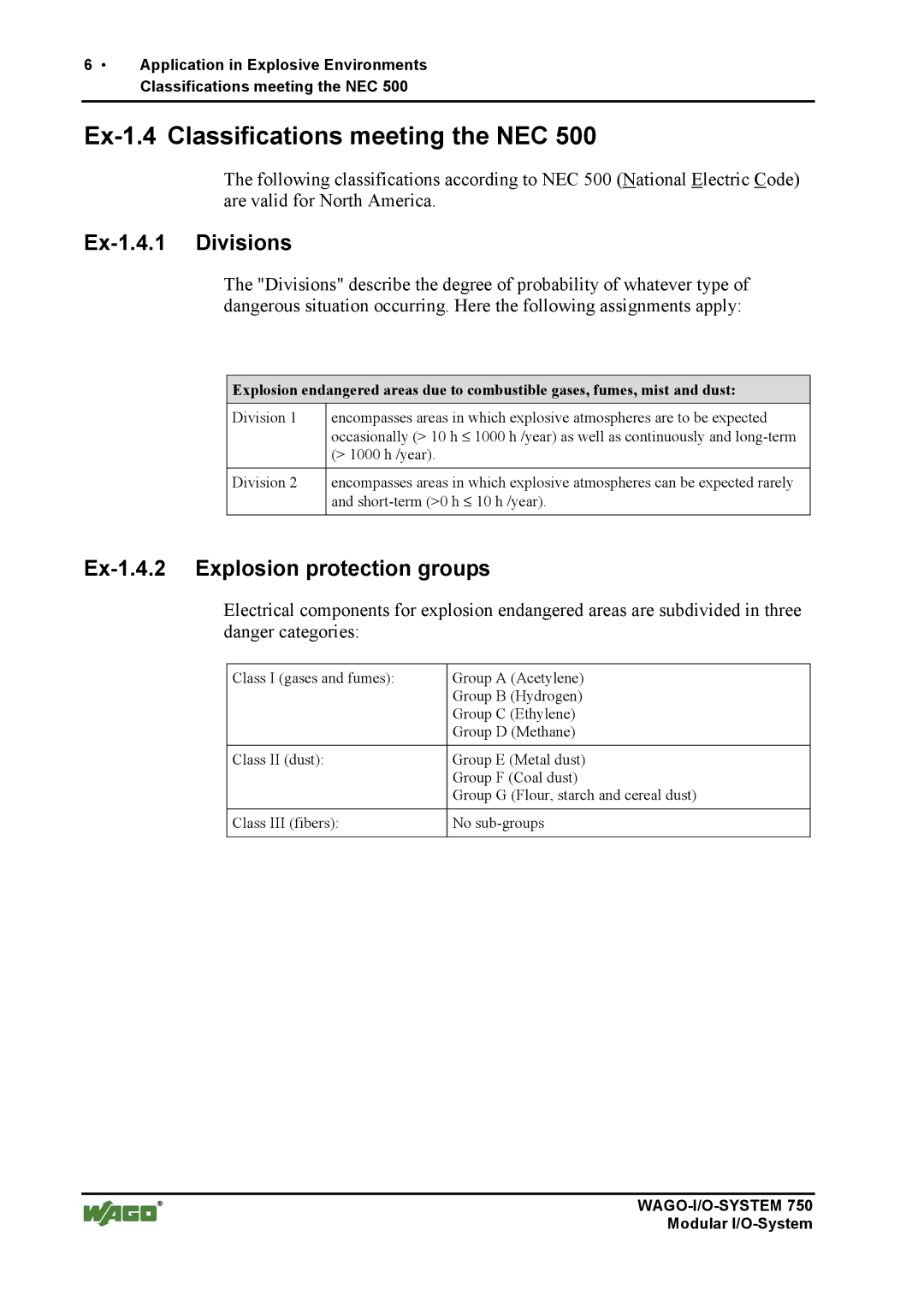
6 • Application in Explosive Environments
Classifications meeting the NEC 500
Ex-1.4 Classifications meeting the NEC 500
The following classifications according to NEC 500 (National Electric Code) are valid for North America.
Ex-1.4.1 Divisions
The "Divisions" describe the degree of probability of whatever type of dangerous situation occurring. Here the following assignments apply:
Explosion endangered areas due to combustible gases, fumes, mist and dust:
Division 1 | encompasses areas in which explosive atmospheres are to be expected |
| occasionally (> 10 h ≤ 1000 h /year) as well as continuously and |
| (> 1000 h /year). |
|
|
Division 2 | encompasses areas in which explosive atmospheres can be expected rarely |
| and |
|
|
Ex-1.4.2 Explosion protection groups
Electrical components for explosion endangered areas are subdivided in three danger categories:
Class I (gases and fumes): | Group A (Acetylene) |
| Group B (Hydrogen) |
| Group C (Ethylene) |
| Group D (Methane) |
|
|
Class II (dust): | Group E (Metal dust) |
| Group F (Coal dust) |
| Group G (Flour, starch and cereal dust) |
|
|
Class III (fibers): | No |
|
|
